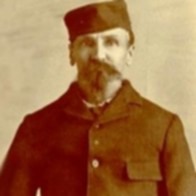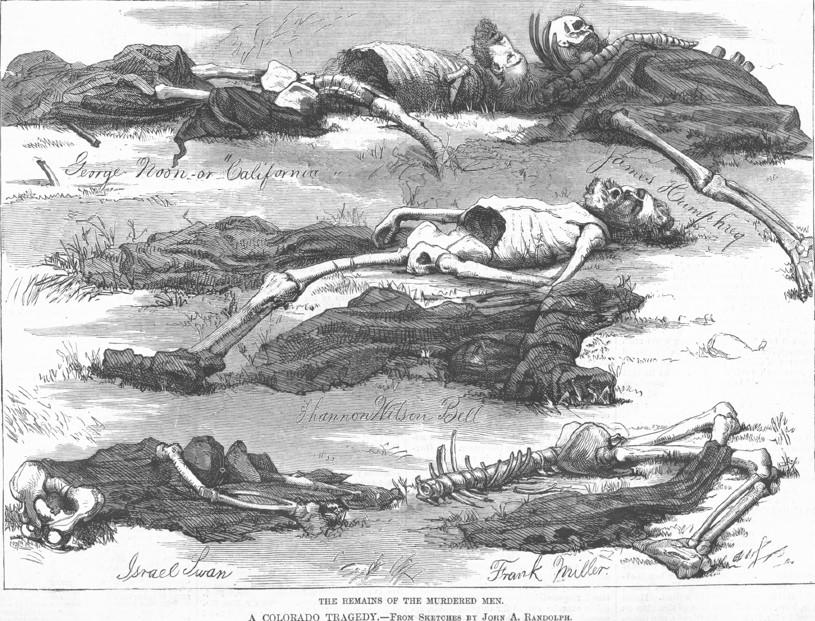
1842 - 1907
Alfred Griner Packer
Summary
Name:
Nickname:
John Schwartze / Colorado CannibalYears Active:
1874Birth:
January 21, 1842Status:
DeceasedClass:
MurdererVictims:
5Method:
Shooting / BludgeoningDeath:
April 23, 1907Nationality:
USA
1842 - 1907
Alfred Griner Packer
Summary: Murderer
Name:
Alfred Griner PackerNickname:
John Schwartze / Colorado CannibalStatus:
DeceasedVictims:
5Method:
Shooting / BludgeoningNationality:
USABirth:
January 21, 1842Death:
April 23, 1907Years Active:
1874Date Convicted:
June 8, 1886bio
Alfred Griner Packer was born on January 21, 1842, in an unincorporated area of Allegheny County, Pennsylvania, near Pittsburgh. He was the second of three children in his family. His parents were James Packer and Esther Packer, who was née Griner. In the early 1850s, James moved the family to LaGrange County, Indiana, where he worked as a cabinetmaker.
Packer had a troubled relationship with his parents. This conflict led him to leave home during his late teenage years. He moved to Minnesota, where he began working as a shoemaker. Packer's life took a significant turn when he joined the Union Army during the American Civil War. He enlisted on April 22, 1862, in Winona, Minnesota, and was assigned to Company F of the 16th Infantry Regiment. However, he was discharged after just eight months due to epilepsy, a condition that caused him to have seizures.
After his first military service, Packer tried to enlist again. On June 25, 1863, he joined the 8th Iowa Cavalry Regiment in Ottumwa, Iowa. Unfortunately, his epilepsy resulted in another discharge on April 22, 1864.
Following his time in the army, Packer traveled west and worked various jobs over the next nine years. He took roles as a hunter, wagon teamster, ranch hand, and field worker. Unfortunately, his epilepsy and difficult personality made it hard for him to keep any job for long. He even spent a few months working as a guide, but many found him ill-suited for the role.
Packer's reputation among those who knew him was not positive. Many people found him untrustworthy due to his tendency to argue, his habit of lying, and his history of theft. In search of fortune, he worked mining jobs, drifting from place to place without ever achieving success. In late 1873, news of gold discoveries in Breckenridge, Colorado, reached Packer.
murder story
After 65 days in the wilderness, Alfred Packer emerged on April 16, 1874, near the Los Piños Indian Agency in Colorado. He approached the agency and begged for food and shelter. He was visibly bloated and not malnourished despite claiming to have survived on roots and rosebuds. He carried a rifle and a few personal items. When questioned about his companions, he spun a tale of being abandoned after becoming snow-blind, saying that a man named Israel Swan had given him a rifle just before leaving him behind.
His story raised suspicions among the agency staff, particularly because he looked well-fed despite claiming to have been alone. Packer later reached the nearby town of Saguache, where he purchased supplies and a horse, and began spending money extravagantly. When Preston Nutter, a member of the party he had guided, found him, he became suspicious of Packer's account and engaged him in a confrontation. Nutter found several inconsistencies in Packer’s claims regarding the missing men.
Meanwhile, other members of the original party who were still alive reported to the agency that Packer could not be trusted. They discovered that items belonging to the missing men were in Packer's possession, which further fueled doubts about his innocence. Authorities decided to bring Packer back under the pretense of recruiting him for a search party for the missing miners.

Once back at the agency, Packer repeated his previous claims. However, new information revealed that he had been seen spending a large sum of money during his stay in Saguache and had different wallets in his possession. As the situation escalated, Packer became more desperate and finally confessed to his involvement in the deaths. He claimed starvation led to cannibalism among the group, stating that they had resorted to eating each other.
Later, a search party was organized to find the bodies of the deceased. They discovered all five men in a remote location. The bodies were in various states of decomposition and showed signs of violence, indicating they had suffered blunt force trauma, likely from a hatchet. This contradicted Packer’s claims that they had died from exposure and starvation.
After thorough investigation, Packer was arrested for the deaths of his companions. He attempted to plead self-defense in some accounts, saying that others had attacked him first, and that he only retaliated when necessary. However, forensic evidence and the condition of the bodies presented significant inconsistencies with his statements.
Packer went on trial for murder. Public opinion was largely against him, and he was found guilty of involuntary manslaughter after his sentence of death was overturned due to legal loopholes. Ultimately, he served 40 years in prison, though he spent only 18 years behind bars before being paroled due to changing public sentiment.
After his release, he lived a quiet life until his death in 1907.